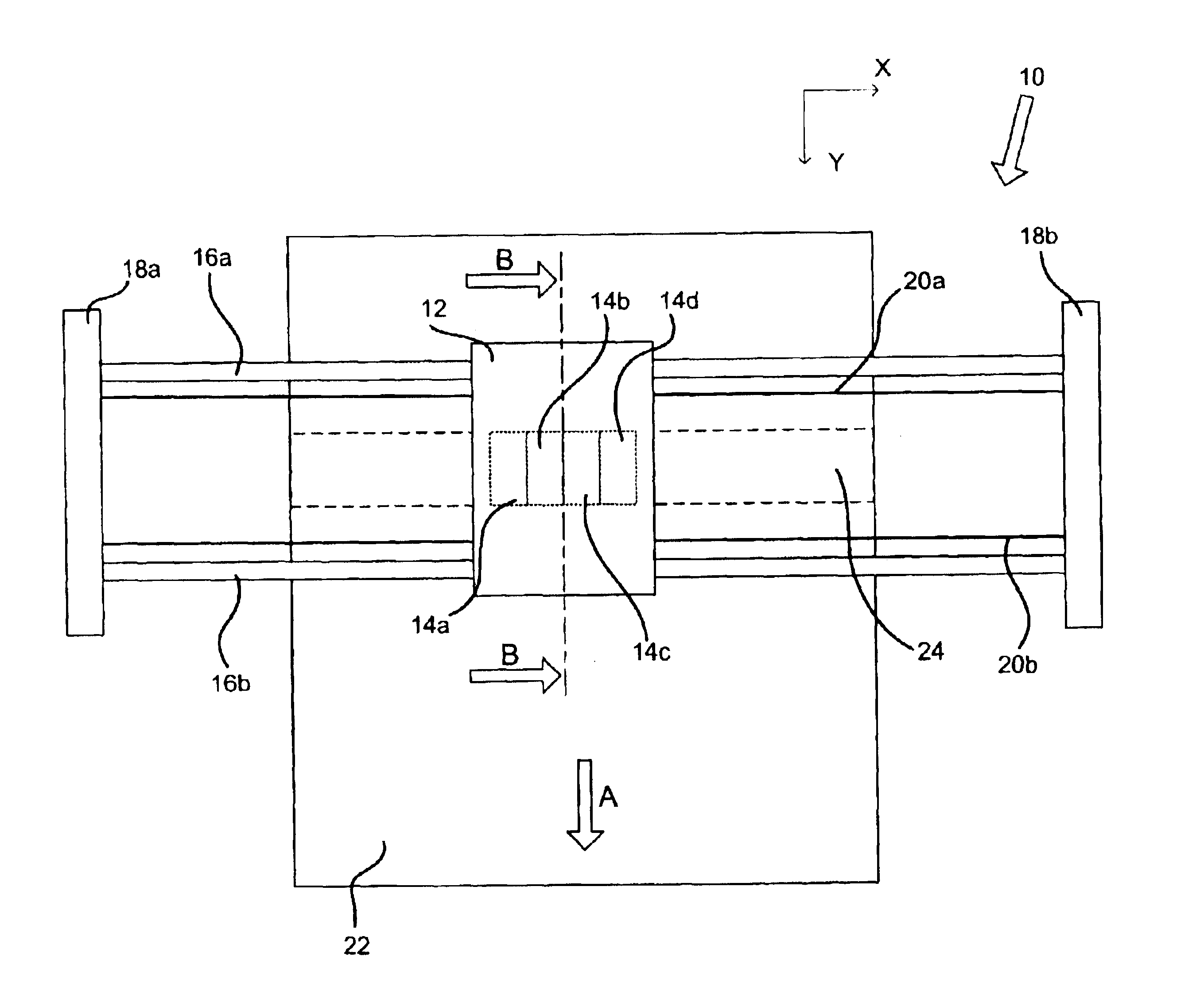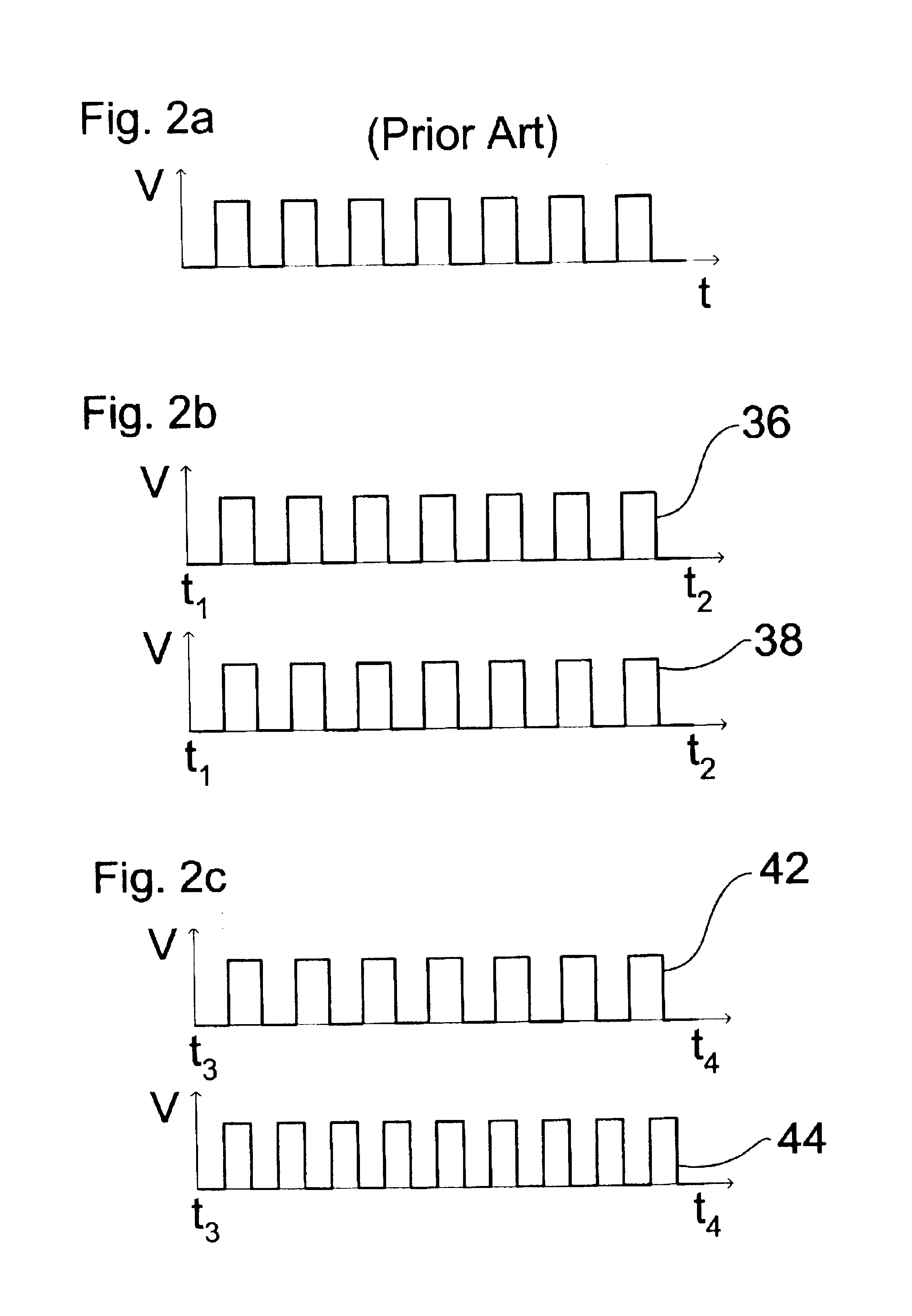Position measurement system and method
a technology of position measurement and measurement method, applied in the direction of printing mechanism, spacing mechanism, printing, etc., can solve the problem of large drop placement error, achieve the effect of reducing the distance between the codestrip and the printhead, avoiding cluttering the generally crowded print zone area, and accurately determining the position of the printhead
- Summary
- Abstract
- Description
- Claims
- Application Information
AI Technical Summary
Benefits of technology
Problems solved by technology
Method used
Image
Examples
first embodiment
FIG. 1a schematically illustrates an inkjet printing mechanism according to a first embodiment of the invention in plan view. In the present example, the inkjet printing mechanism is large format inkjet printer 10, which is suitable for printing conventional engineering and architectural drawings, as well as high quality poster-sized images.
As can be seen from the figure, the printer 10 has a chassis, here represented by two parallel plates 18a and 18b. Two carriage guide rods 16a and 16b are supported between the plates 18a and 18b. The two guide rods 16a and 16b lie parallel to one another and are aligned with the scanning axis of the printer. This is parallel to the X axis in the figure. The two guide rods 16a and 16b are arranged to support an inkjet carriage 12. The carriage 12 is arranged to be driven back and forth in a conventional manner along the scanning axis, between the plates 18a and 18b and in so doing to traverse the print zone 24 of the printer. In the present embod...
second embodiment
The second embodiment of the present invention generally employs the same apparatus and generally operates in the same manner as described with reference to the first embodiment. Therefore, similar apparatus and methods of operation will not be described further. Additionally, similar components are illustrated and numbered in the same manner as is the case in the earlier embodiment.
In the second embodiment of the invention, instead of generating a single virtual carriage position signal from the carriage position signals output by the two sensors 28 and 30, multiple virtual carriage position signals are generated. In this way different weighted averages of the carriage position signals output by the two sensors 28 and 30 may be generated and used to determine the firing timing of different groups of ink ejection nozzles in the printheads.
Referring to FIG. 4a, this embodiment will now be described. FIG. 4a schematically illustrates how a given point on the printer carriage 12 is dis...
PUM
 Login to View More
Login to View More Abstract
Description
Claims
Application Information
 Login to View More
Login to View More - R&D
- Intellectual Property
- Life Sciences
- Materials
- Tech Scout
- Unparalleled Data Quality
- Higher Quality Content
- 60% Fewer Hallucinations
Browse by: Latest US Patents, China's latest patents, Technical Efficacy Thesaurus, Application Domain, Technology Topic, Popular Technical Reports.
© 2025 PatSnap. All rights reserved.Legal|Privacy policy|Modern Slavery Act Transparency Statement|Sitemap|About US| Contact US: help@patsnap.com



